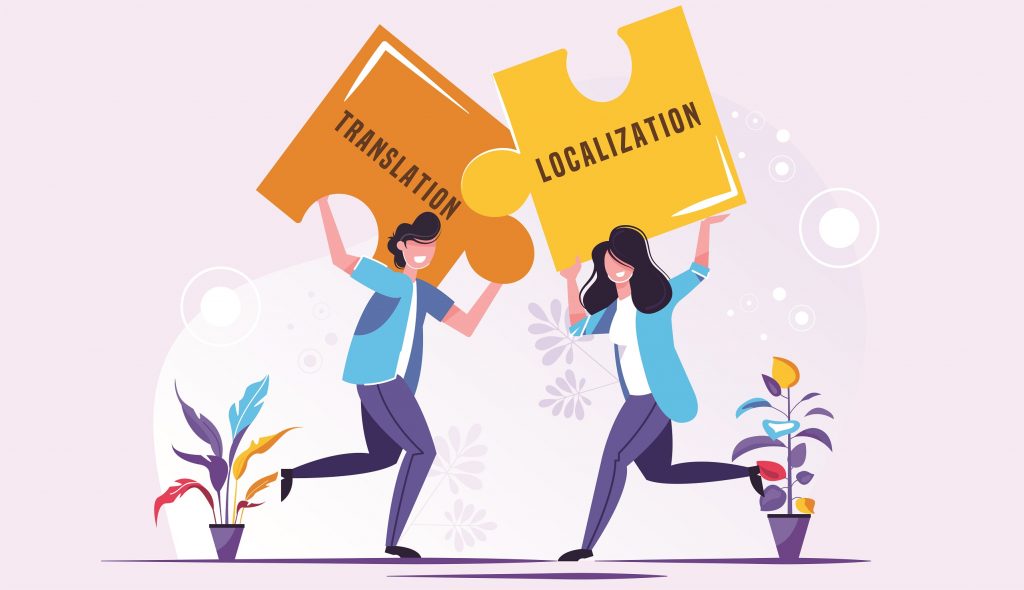The localization and translation industry uses a large number of slang terms and acronyms. You’ll hear the words “localization” and “translation” used interchangeably if you spend time outside the localization industry. Practitioners are well aware of the differences between the two methods and may point to specific examples.
We’ve gathered unique examples and use cases from various industries to demonstrate the distinctions (and similarities) between translation and localization. As a starting point, let’s clarify the essential difference between the two methods.
What Is The Difference Between Translation And Localization?
This article can learn about the differences between translation and localization, which is a wonderful place to start. There are numerous approaches to adapting content for international audiences, but localization is a large field comparable to all other approaches.
Layout And Formatting Are Taken Into Account By Localization
Another method of localization is to make changes to the layout. Some languages read from right to left. Our ad would have to be flipped for the copy, images, and other content pieces to flow correctly.
Font size and type may also have to be altered to clearly read languages written in scripts other than the Roman alphabet. This is true even when the information is translated into a language with the same alphabet as English.
Finnish is 35–45 percent less verbose than English. Layout localization ensures that the copy reads correctly even if the language has been changed. Businesses can use visual context tools to guarantee that formatting and layout are correctly altered to accommodate translations.
Images Play A Key Role In Localization
In addition to translation, picture adaptation is also required for localization. Let’s have a look at our example again: The company’s front entrance may be shown with a goalpost in the background and a customer dashing through it.
It’s impossible to understand the picture if the copy doesn’t refer back to the original draft. Even if the actual words were more international, the picture itself would still need to be changed to something the new market understands. Football is a distinctly American sport.
Localization Involves More Than Just Translation
After that, there’s the rest: Are you paying in the correct currency? Is the format of the dates correct? Measurements in English or Metric are used to determine the size of the goods. All of these topics fall under the umbrella term of “localization.”
The words must be converted from one language to another to translate a text while retaining the original meaning and thoughts behind the text. On the other side, localization entails making even more adjustments to conform to your intended audience’s cultural norms. The familiarity of localized information is undeniable.
Translation And Localization Of Website Content?
Translating your text into another language is one thing; localizing it is quite another. Cultural, visual and technical considerations are considered when translating a website for visitors who speak other languages. As a matter of fact, translation is merely one component of the process of localization.
Let’s take a closer look.
Website Translation
Translating web content from one language to another is called website translation, and it involves converting content from one source language to another.
Your website’s content will only be updated with correct sentences in a different language if you have a translation management project. The style and tone of your source content should be reflected in your translated content, but keep in mind the context.
Website Localization
As a result of website localization, your website’s content and applications can be tailored to a specific market. It goes above and beyond simple translation management, customizing the site’s content and other components to better suit the target audience’s needs.
Your website’s reach would significantly increase if you undertook a localization project. To account for cultural differences, you may want to adjust your content’s tone and use of idioms and terms. Visual components such as buttons may also need to be changed or expanded to accommodate varying word and phrase lengths in foreign languages. The site may undergo technological upgrades to make it more user-friendly for overseas visitors.
Which Is Better, Translation Or Localization?
On a tactical level, website translation and localization are not the same things. A simple translation may be adequate for some sorts of content in some markets. Adapting highly dynamic creative marketing content is often necessitated by the need for localization.
Marketing material, legal and technical information, and user-generated forum content are likely to be found on your website. When it comes to efficiency and expense, it’s essential to know which content necessitates localization and which may be translated without it. Instead of attempting to catch every aspect of every comment made on your company’s blog, you might want to develop effective marketing materials.
For the best results, you need to evaluate your audience and the type and goal of the content. Other variables include volume, life span, update frequency, and budget. It all depends on the capability of your Language Service Provider (LSP). With the help of various services provided by your LSP, the functionality of your website in several languages should be completely functioning. Your LSP should be able to provide guidance on which elements of your site should be localized.
Wrap Up
We’ve been delivering regulatory translation services by industry and subject matter specialists. At CQ fluency we have a wide range of experience translating for various regulatory requirements in multiple countries and locations throughout the world. You can rely on us to help you comply with all language regulations thanks to our extensive knowledge and experience.



